
American troops arrive in Korea to partition the country on September 08, 1945
American troops arrive in Korea to partition the country: U.S. troops land in Korea to begin their postwar occupation of the southern part of that nation, almost exactly one month after Soviet troops had entered northern Korea to begin their own occupation. Although the U.S. and Soviet occupations were supposed to be temporary, the division of Korea quickly became permanent.
Korea had been a Japanese possession since the early 20th century. During World War II, the allies–the United States, Soviet Union, China, and Great Britain–made a somewhat hazy agreement that Korea should become an independent country following the war. As the war progressed, U.S. officials began to press the Soviets to enter the war against Japan. At the Yalta Conference in February 1945, Soviet leader Joseph Stalin pledged that his nation would declare war on Japan exactly three months after Nazi Germany was defeated.
A few months later, at the Potsdam Conference in July and August 1945, it was agreed that Soviet troops would occupy the northern portion of Korea, while American forces would take a similar action in southern Korea in order to secure the area and liberate it from Japanese control. The occupations would be temporary, and Korea would eventually decide its own political future, though no date was set for the end of the U.S. and Soviet occupations. On August 8, the Soviets declared war on Japan. On August 9, Soviet forces invaded northern Korea. A few days later, Japan surrendered. Keeping to their part of the bargain, U.S. forces entered southern Korea on September 8, 1945.
Over the next few years, the situation in Korea steadily worsened. A civil war between communist and nationalist forces in southern Korea resulted in thousands of people killed and wounded. The Soviets steadfastly refused to consider any plans for the reunification of Korea. The United States reacted by setting up a government in South Korea, headed by Syngman Rhee. The Soviets established a communist regime in North Korea, under the leadership of Kim Il-Sung. In 1948, the United States again offered to hold national elections, but the Soviets refused the offer. Elections were held in South Korea, and Rhee’s government received a popular mandate. The Soviets refused to recognize Rhee’s government, though, and insisted that Kim Il-Sung was the true leader of all Korea.
Having secured the establishment of a communist government in North Korea, Soviet troops withdrew in 1948; and U.S. troops in South Korea followed suit in 1949. In 1950, the North Koreans attempted to reunite the nation by force and launched a massive military assault on South Korea. The United States quickly came to the aid of South Korea, beginning a three-year involvement in the bloody and frustrating Korean War. Korea remains a divided nation today, and the North Korean regime is one of the few remaining communist governments left in the world.
History.com / Wikipedia / Encyclopedia Britannica / The Atlantic / Imperial War Museum.org UK
/ American troops arrive in Korea to partition the country on September 08, 1945 (YouTube) 
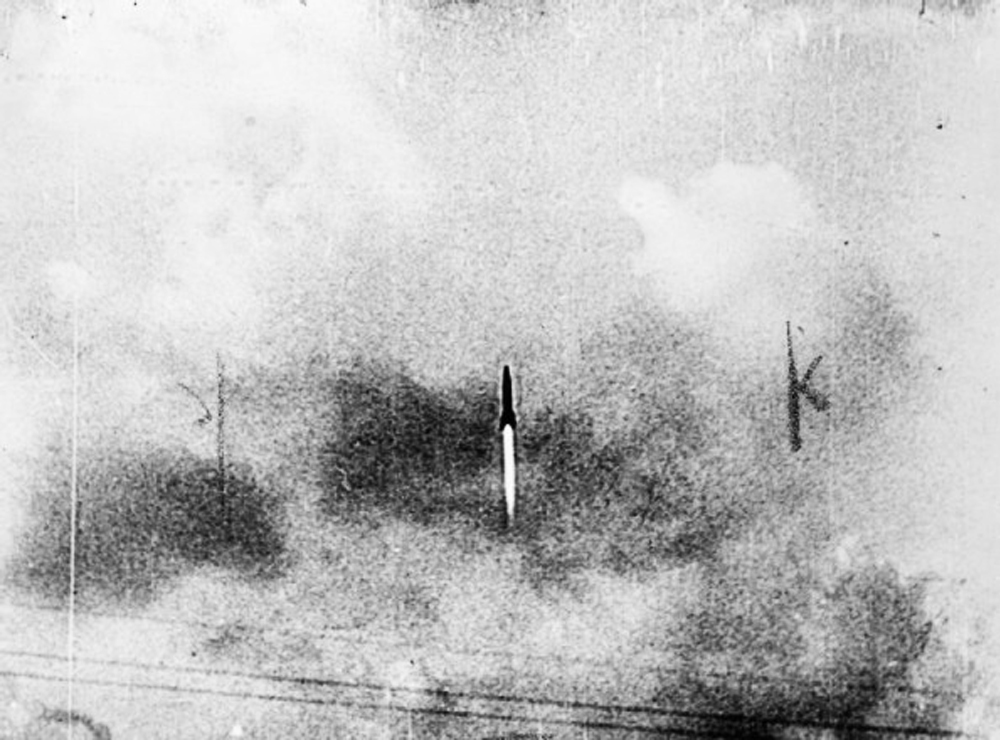
World War II: London is hit by a V-2 rocket for the first time on September 08, 1944
World War II: London is hit by a V-2 rocket for the first time: The first ballistic missile attacks - V2 rockets
On 8th September the British newspapers were full of reports of the rapid Allied advance through France and Belgium. A further victory was also apparent.The British had conquered the German V1 rocket attacks and there was widespread reporting of a statement made by War Cabinet member Duncan Sandys who had claimed that “except possibly for the last few shots, the battle of London is over”.
A highly concentrated barrage of anti aircraft guns on the south coast had proved to be very effective in knocking the V1 rockets out of the sky. Those that got through the barrage were often intercepted by pursuing aircraft, either Typhoon or the latest Spitfires, which just had the speed to catch them. On 28th August 90 out of 97 V1 rockets fired at London had been brought down by the guns, and only four missiles got through to hit London. Soon the Allied advances on the continent would put them completely out of range.
Allied intelligence knew about the V2 but had little information on how close the Germans were to making them operational.
In fact the Germans had been struggling with the problem of the V2 rockets exploding in mid air. On 30th August they had introduced modifications which seemed to have solved the problem. Just before noon on the 8th a German rocket battery in occupied Belgium had pumped eight tons of alcohol and liquid oxygen into their rocket and fired it at Paris. Six people were killed and thirty-six injured.
At 6.43pm that day Chiswick, west London was rocked by a massive explosion, closely followed by another boom that was heard across London. The first explosion had been real enough – caused by 760 kilos of Amatol. The explosion that was heard just after it was the supersonic missile breaking the sound barrier as it re-entered the atmosphere. It had been just minutes since the missile had left the Hague in Holland.
Attempts by the Press to report the ‘Mystery Explosion’, the site of which had been visited by several unusually senior military figures and politicians, were blocked by the censor. Locally the reason given was ‘a Gas Main explosion’. Over the following weeks Londoners were to become familiar with this phrase.
World War II Today / Wikipedia / Encyclopedia Britannica / Smithsonian Air and Space / Daily Mail UK
/ World War II: London is hit by a V-2 rocket for the first time on September 08, 1944 (YouTube) 
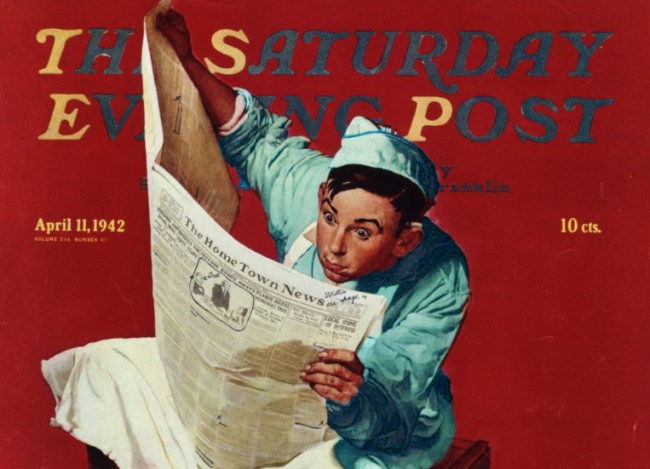
Understanding Military Terminology - National Emergency
(DOD) A condition declared by the President or the Congress by virtue of powers previously vested in them that authorize certain emergency actions to be undertaken in the national interest.
See also Mobilization.
Joint Publications (JP 3-28) Doctrine for the Armed Forces of the United States
Mobilization
(DOD) 1. The process of assembling and organizing national resources to support national objectives in time of war or other emergencies. See also industrial mobilization.
2. The process by which the Armed Forces of the United States or part of them are brought to a state of readiness for war or other national emergency, which includes activating all or part of the Reserve Component as well as assembling and organizing personnel, supplies, and materiel. Also called MOB.
Joint Publications (JP 4-05) Joint Mobilization Planning - Joint Chiefs of Staff
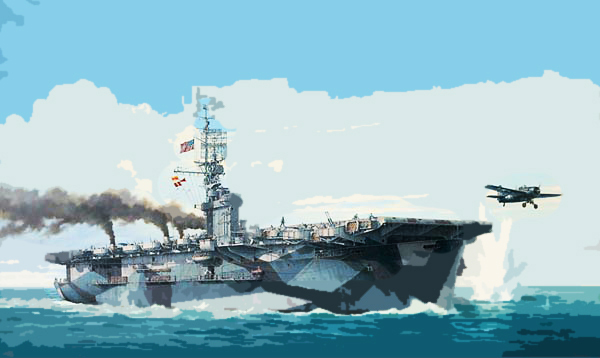
The Old Salt’s Corner
“Tin Can Sailors”
The mighty 3rd to the north did steam,
Chasing a ghost not to be seen
Guard the landing your task assigned,
Quiet the day is to be benign.
At dawn the Imperial fleet does appear,
Surprise complete, ranging fire splashes near
Outnumbered and out gunned, duty is clear,
Close the range you must in spite of your fear.
Laying smoke, a jagged course you take,
An account of yourselves you will make
Steel your heart and make sure your eye,
For each salvo keeps you alive.
Toe-to-toe the battle, you exchange mighty blows,
Triumph impossible, yet into the fray you all go
In perfect rhythm, the mad dance goes on,
As smoke filled gunhouse loads powder and shot.
Decks strewn with the dead and dying,
Teams repair to keep the ensign flying
Struck and struck again, yet to point blank you steam,
Hard to port, you cross the “T”.
“All guns to fire at the turn, torpedoes away!”
The enemy scatters in disarray
Too late, mortal blows you take
To the deep, no more your enemy to rake.
One final salute their captain does render,
For you fought to the death and did not surrender
On this all men do still agree,
These were the finest two hours of Taffy 3
On October 25th, 1944, 3 destroyers and 4 destroyer escorts of Task Force
Taffy 3 engaged a combined force of Imperial Japanese Navy battleships and
cruisers in a 2 hour running gun battle to protect the escort carriers and troop
transports taking part in the Leyte Gulf landings in the Philippines.
Two of the
three destroyers and one of the escorts were sunk while sinking three
Japanese heavy cruisers and damaged three more. Due to the fierceness of
the attack, the Japanese fleet retired from the area thinking they had been
attacked by a much larger force.
At the outset of the battle, the commanding
officers of these 7 ships, without orders, individually decided to attack and
headed at flank speed to the fight all knowing they would most likely not
survive the day. Almost 1600 did not. In a final act of respect, the commander
of one Japanese cruiser saluted the crew of an American ship that had just
sunk as his ship passed them floating in the water.
~ Steve Harris (Poetry Soup)
Battle off Samar (Wwikipedia)

“I’m Just Sayin”
“Love is giving someone the ability to destroy you, but trusting them not to.”
~ Unknown

“Thought for the Day”
“Thirty-one chances.
Thirty-one futures, our futures.
It’s an almost psychotic feeling,
believing that part of their lives belongs to me.
Everything they become, I also become.
And everything about me, they helped to create.”
~ Esme Raji Codell

“What I Learned”
“Aaaaaarrrrr rhhhnnn gggggrrrrr.”
~ Chewbacca
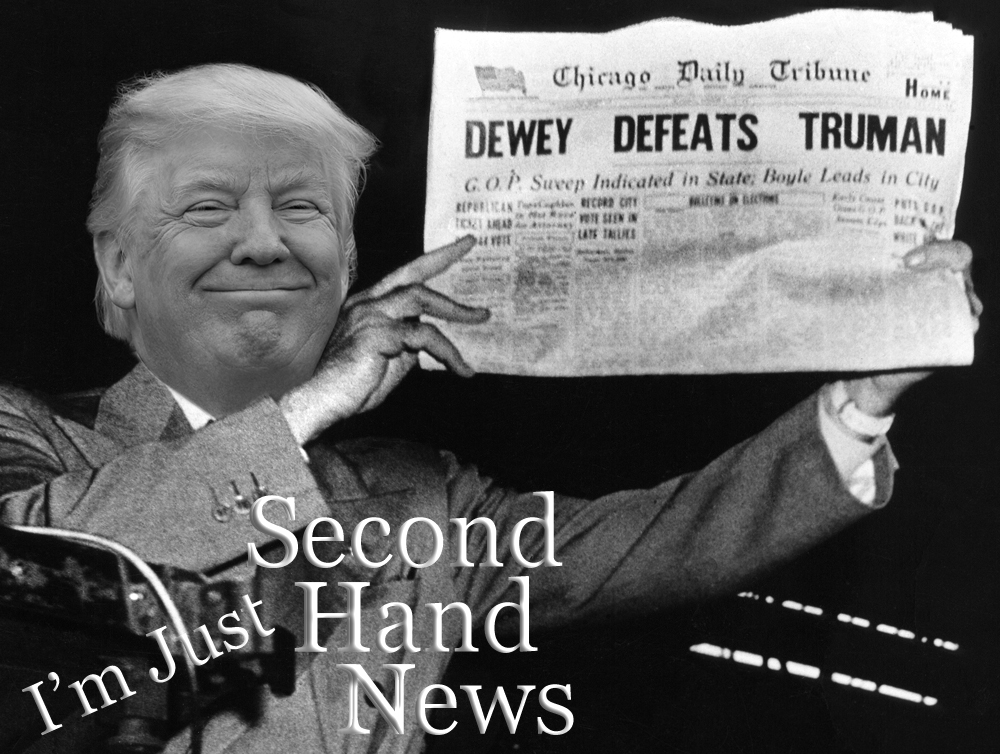
Second Hand News (Links to Articles from Week 36 - September 02, 2019 - September 08, 2019)
 'Extreme destruction': Video emerges as Category 5 Hurricane Dorian makes landfall in the Bahamas
• Texas mass shooter had record of criminal trespass and evading arrest
• 'Alpha male wolf' and 'finest of tribal elders': The two sides of General James Mattis, U.S. Marine
'Extreme destruction': Video emerges as Category 5 Hurricane Dorian makes landfall in the Bahamas
• Texas mass shooter had record of criminal trespass and evading arrest
• 'Alpha male wolf' and 'finest of tribal elders': The two sides of General James Mattis, U.S. Marine
Editor's Picks:
'National security imperative': Military spouses struggle to find employment
• Trump China tariffs headed for rates comparable to Smoot-Hawley levies that worsened Great Depression
• Huge turnout expected for funeral of WWII Pacific veteran who died at 97 with no known relatives
Washington Examiner
 Second strongest storm in HISTORY: Hurricane Dorian crawls across the Bahamas at record slow speed destroying 13,000 homes and killing one with 225mph gusts as millions evacuate in the East Coast amid fears for Florida, Georgia and the Carolinas
• Four bodies are pulled from the water while 29 are still missing and feared dead after a dive boat burst into flames off California when the passengers were asleep - as captain is heard screaming 'they can't get off' in chilling distress call
Second strongest storm in HISTORY: Hurricane Dorian crawls across the Bahamas at record slow speed destroying 13,000 homes and killing one with 225mph gusts as millions evacuate in the East Coast amid fears for Florida, Georgia and the Carolinas
• Four bodies are pulled from the water while 29 are still missing and feared dead after a dive boat burst into flames off California when the passengers were asleep - as captain is heard screaming 'they can't get off' in chilling distress call
Trump vows to work with Congress to 'stop the menace of mass shootings' while 'protecting our Second Amendment' after gunman kills seven in west Texas
• Odessa gunman 36, was FIRED from his job as a trucker hours before his shooting rampage left seven dead
• Texas gunman who killed seven lived in a remote home with no running water or heating, would shoot animals from his roof and threatened neighbours with guns
Trump's tariffs on Chinese goods come into effect TODAY, placing 15% tax on $112 billion of imported items
• Thousands of students boycott school on the first day of the new term to 'fight for Hong Kong' after the city was rocked by another weekend of violence
'They really set our Country back': Trump blasts ex-Obama officials Jim Comey, James Clapper, and John Brennan
• Alexandra Ocasio-Cortez mocks Boston's 'Straight Pride' parade by suggesting it should've been called an 'I-Struggle-With-Masculinity' march after coverage showed a crowd of mostly male participants
Daily Mail UK
 China condemns U.S. blacklisting of nuclear firms
• United States accuses China of stealing F-35 technology to make a stealth fighter - “looks a lot like the F-35, that’s because it is the F-35 - They just stole it”
• Huawei denies new tech theft claim, accuses US of trying to disrupt company
China condemns U.S. blacklisting of nuclear firms
• United States accuses China of stealing F-35 technology to make a stealth fighter - “looks a lot like the F-35, that’s because it is the F-35 - They just stole it”
• Huawei denies new tech theft claim, accuses US of trying to disrupt company
North Korea Nuclear Crisis: China tells North Korea it wants ‘closer communication, cooperation’ / North Korea says hopes for nuclear talks fading after U.S. ‘rogue’ comment
‘More than 40,000’ attend second day of strike rally in Hong Kong
• Hong Kong police pepper spray angry crowd after man subdued in station
• Judiciary and rest of government must help stop Hong Kong violence: Beijing
South China Morning Post
 Ball of Collusion: The Plot to Rig an Election and Destroy a Presidency Hardcover
Ball of Collusion: The Plot to Rig an Election and Destroy a Presidency Hardcover
 2 of 12.
2 of 12.
 3 of 12.
3 of 12.
 4 of 12.
4 of 12.
 5 of 12.
5 of 12.
 6 of 12.
6 of 12.
 7 of 12.
7 of 12.
 8 of 12.
8 of 12.
 9 of 12.
9 of 12.
 10 of 12.
10 of 12.
 11 of 12.
11 of 12.
 12 of 12.
12 of 12.
 John Batchelor (08/24/2019)
John Batchelor (08/24/2019)
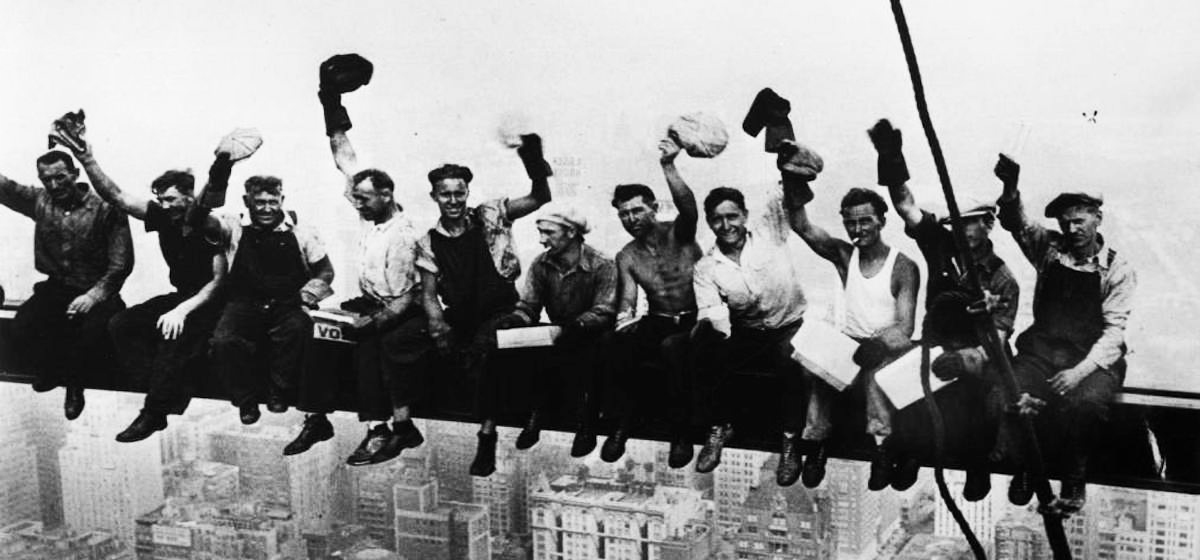
Mr. Answer Man Please Tell Us: What is the History of Labor Day?
Labor Day 2019
On Labor Day 2019, the U.S. Department of Labor celebrates and honors the greatest worker in the world – the American worker.
Labor Day: What it Means
Labor Day, the first Monday in September, is a creation of the labor movement and is dedicated to the social and economic achievements of American workers. It constitutes a yearly national tribute to the contributions workers have made to the strength, prosperity, and well-being of our country.
Labor Day Legislation
The first governmental recognition came through municipal ordinances passed in 1885 and 1886. From these, a movement developed to secure state legislation. The first state bill was introduced into the New York legislature, but the first to become law was passed by Oregon on February 21, 1887. During 1887 four more states — Colorado, Massachusetts, New Jersey, and New York — created the Labor Day holiday by legislative enactment. By the end of the decade Connecticut, Nebraska, and Pennsylvania had followed suit. By 1894, 23 more states had adopted the holiday, and on June 28, 1894, Congress passed an act making the first Monday in September of each year a legal holiday in the District of Columbia and the territories.

Founder of Labor Day
More than a century after the first Labor Day observance, there is still some doubt as to who first proposed the holiday for workers.
Some records show that Peter J. McGuire, general secretary of the Brotherhood of Carpenters and Joiners and a co-founder of the American Federation of Labor, was first in suggesting a day to honor those “who from rude nature have delved and carved all the grandeur we behold.”
But Peter McGuire's place in Labor Day history has not gone unchallenged. Many believe that Matthew Maguire, a machinist, not Peter McGuire, founded the holiday. Recent research seems to support the contention that Matthew Maguire, later the secretary of Local 344 of the International Association of Machinists in Paterson, N.J., proposed the holiday in 1882 while serving as secretary of the Central Labor Union in New York. What is clear is that the Central Labor Union adopted a Labor Day proposal and appointed a committee to plan a demonstration and picnic.
The First Labor Day
The first Labor Day holiday was celebrated on Tuesday, September 5, 1882, in New York City, in accordance with the plans of the Central Labor Union. The Central Labor Union held its second Labor Day holiday just a year later, on September 5, 1883.
In 1894 the first Monday in September was selected as the holiday, as originally proposed, and the Central Labor Union urged similar organizations in other cities to follow the example of New York and celebrate a “workingmen's holiday” on that date. The idea spread with the growth of labor organizations, and in 1895 Labor Day was celebrated in many industrial centers of the country.

A Nationwide Holiday
Women's Auxiliary Typographical UnionThe form that the observance and celebration of Labor Day should take was outlined in the first proposal of the holiday — a street parade to exhibit to the public "the strength and esprit de corps of the trade and labor organizations" of the community, followed by a festival for the recreation and amusement of the workers and their families. This became the pattern for the celebrations of Labor Day. Speeches by prominent men and women were introduced later, as more emphasis was placed upon the economic and civic significance of the holiday. Still later, by a resolution of the American Federation of Labor convention of 1909, the Sunday preceding Labor Day was adopted as Labor Sunday and dedicated to the spiritual and educational aspects of the labor movement.
The character of the Labor Day celebration has undergone a change in recent years, especially in large industrial centers where mass displays and huge parades have proved a problem. This change, however, is more a shift in emphasis and medium of expression. Labor Day addresses by leading union officials, industrialists, educators, clerics and government officials are given wide coverage in newspapers, radio, and television.
The vital force of labor added materially to the highest standard of living and the greatest production the world has ever known and has brought us closer to the realization of our traditional ideals of economic and political democracy. It is appropriate, therefore, that the nation pays tribute on Labor Day to the creator of so much of the nation's strength, freedom, and leadership — the American worker.
Encyclopedia Britannica
• Department Of Labor
• The Street
• Wikipedia
• What is the History of Labor Day? (YouTube Search) 

NAVSPEAK aka U.S. Navy Slang
Freeball: To wear no skivvies.
Freeboard: On a ship or boat, this is the vertical distance between the waterline and the “gunwale” (see F.R.E.D. below).
F.R.E.D.: Fucked Up Ridiculous Educational Device: The computer that graded the teletype capabilities of those going through Radioman “A” School. So called because it used to grade based on keystrokes rather than words per minute.
Fresh Water Navy (derogatory): Members of the U.S. Coast Guard.
Fried Calamari: A sailor who has been electrocuted. This term derives from the nickname “squid”, meaning “sailor”.
Fried horse cock: Fried baloney.
Frocked: Advanced in rank or rate with no pay increase. See BOHICA.
Frog Hog: A female who hangs around Navy SEALs.
Fruit Salad: Numerous ribbons on a dress uniform.
Wiktionary.org

Just for you MARINE
Fobbie or Fobbit: A Marine who rarely sees combat; pejorative term for Marines stuck inside a forward operating base.
Follow it: Said when a rifle is dropped by a Marine, the Marine is expected to follow it to the ground by doing a push up as punishment for allowing their rifle to hit the deck. Also used when a Marine drops anything.
Form ID-10T or ID-Ten-Tango: Pejorative for “idiot”.
Fortitudine: Former motto of the Marine Corps in the 19th century (replaced by Semper Fidelis), from the Latin word for “fortitude”; also the name of the Marine Corps History Division's quarterly magazine.
Four Fingers of Death: Nickname for the ill famed frankfurter MRE (Meals-Ready-to-Eat) with four small hot dogs as the main meal MRE.
Wikipedia.org

Naval Aviation Squadron Nicknames
VT-22 Training Squadron (VT-22) TRARON TWO TWO - nicknamed the “Golden Eagles”
United States Navy - Naval Air Station - Kingsville, Texas in Kleberg County - Navy Region Southeast, Training Air Wing Two: June 13, 1949 - present.

Where Did That Saying Come From?

“God helps those who help themselves:”
Meaning: Don't just wait for good things to happen to you. Work hard to achieve your goals.
History: A proverb is a short, pithy saying that expresses a traditionally held truth or piece of advice, based on common sense or experience.
Nothing defines a culture as distinctly as its language, and the element of language that best encapsulates a society's values and beliefs is its proverbs.
This graphic shows the words that are used in English proverbs, with the size of each word indicating how often it occurs.
No collection of proverbs in English would be complete without the proverbs collected and published by the Tudor courtier John Heywood.
As so many proverbs offer advice and uplift many of them are religious in origin, here's an additional list of biblical proverbs.
Phrases.org.uk

Science & Technology

Killer asteroid flattens New York in simulation exercise
• SpaceX launches supplies to space station after power delays
• Life's biochemical networks could have formed spontaneously on Earth
• A novel technique that uses quantum light to measure temperature at the nanoscale
• New approach for solving protein structures from tiny crystals
• Quantum sensor for photons
Phys.org / MedicalXpress / TechXplore

Bizarre News (we couldn’t make up stuff this good – real news story)

Why Mathematicians Are Obsessed with (and Hoarding) This Chalk
A type of blackboard chalk that was produced for decades by just one factory in Japan was so highly prized by mathematicians they referred to it as “the Rolls-Royce of chalk”.
And when rumors surfaced about the chalk being discontinued, some academics resorted to stockpiling as many boxes as they could get their chalk-covered hands on.
The tale of Fulltouch chalk, manufactured by Hagoromo Stationery in Nagoya, Japan, and thought by many to be the finest chalk in the world, was recently featured in a short video, shared on YouTube by Great Big Story.
Hagoromo made chalk for more than 80 years, and for those who weren't lucky enough to live in Japan, Fulltouch was always difficult to get. Then, as Hagoromo prepared to shut down in 2015, many dedicated aficionados began grimly preparing for a world without Fulltouch. They bought dozens upon dozens of boxes, some hoarding enough chalk to last through the end of their careers, according to the video. [5 Seriously Mind-Boggling Math Facts]

What is so special about this chalk? Mathematicians in the video described Fulltouch in glowing terms. The chalk is long-lasting, virtually unbreakable, bright and easy to read on a chalkboard, smooth as butter to write with, and practically dustless, Jeremy Kun, a Google engineer with a Ph.D. in mathematics, wrote in a 2015 blog post bidding farewell to Fulltouch.
So renowned is the chalk among mathematics professionals that it is accompanied by its own legend: It is impossible to write a false theorem with it, David Eisenbud, director of the Mathematical Sciences Research Institute in Oakland, California, said in the video.
When the news broke that Fulltouch's maker was ceasing production and closing its doors, it launched a “chalkapocalypse” among mathematicians, said Brian Conrad, a professor at Stanford University in California. In the video, Conrad and others recounted their responses to the chalk emergency, stocking up on enough to carry them through as much as 15 years in a chalk desert.
However, there is a ray of hope for those who didn't have the foresight to fill their closets and cupboards with Fulltouch when they had the chance. Hagoromo sold the Fulltouch recipe — and two of the factory's original chalk-making machines — to the Korean company Sejongmall. The chalk is being manufactured again under its original name, and is available to buy in the U.S. on Amazon.
• The World's Most Beautiful Equations
• The 9 Most Massive Numbers in Existence
• 9 Numbers That Are Cooler Than Pi
Live Science (05/02/2019) 


SONG FACTS
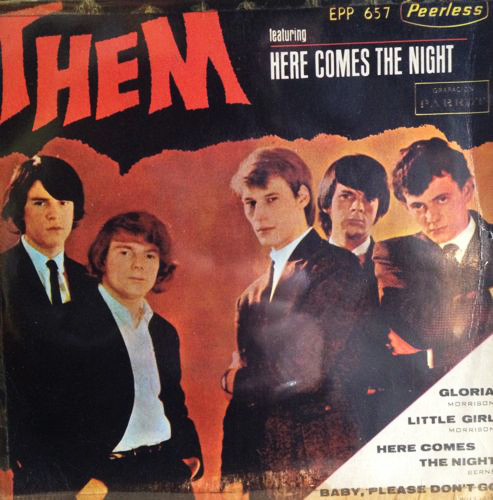
“Here Comes The Night” - Them
Album: Here Comes The Night (1965)
Released 1965 
This song was written by Bert Berns and was released as a single in 1965 with “All For Myself”;  as the B-side. It was the biggest hit for Them, who were from Belfast, Ireland but still considered part of the “British Invasion”.
as the B-side. It was the biggest hit for Them, who were from Belfast, Ireland but still considered part of the “British Invasion”.
Van Morrison was Them's lead singer. He left the band in 1966 to pursue a solo career, and Them changed their name to The Belfast Gypsies and released one album before reverting back to their original name. They released four more albums before splitting.
Bert Berns (a.k.a. Bert Russell) was a talented songwriter and producer whose life was tragically cut short in 1967 at the age of 38 by a fatal heart attack.
among his writing credits are “Twist And Shout”  (The Isley Brothers
(The Isley Brothers  , The Beatles
, The Beatles  ),
“Hang On Sloopy”
),
“Hang On Sloopy”  (The McCoys),
“Piece Of My Heart” (Erma Franklin
(The McCoys),
“Piece Of My Heart” (Erma Franklin  , Janis Joplin
, Janis Joplin  ), and
“Tell Him”
), and
“Tell Him”  (The Exciters).
(The Exciters).
His production credits include Morrison's “Brown Eyed Girl”  and “Under The Boardwalk”
and “Under The Boardwalk”  by The Drifters.
by The Drifters.
Them, official website / Billboard / All Music / Song Facts / Them
Image: “Here Comes The Night (album)” by Them

Trivia
● Before it began to lean, the tower of Pisa was built to be what?
Answer to Trivia
● RCA and Columbia were the first two recording companies to produce music records made from what tough, flexible, shiny plastic?
Answer to Trivia
● As a result of patriotism during the Gulf War, in 1991 Whitney Houston had an unlikely musical hit when she recorded what song?
Answer to Trivia
● In Nathaniel Hawthorne's 1850 novel The Scarlet Letter, beautiful and lovely Hester Prynne is convicted of adultery with the minister, and sentenced to wear a prominent
Answer to Trivia

A Test for People Who Know Everything
From the Jeopardy Archives Category - “HELLO, SUCKER!” ($200)
“At the tequila bar, lick the salt off your hand, drink the shot, then suck on this.”
● Answer for People Who Do Not Know Everything, or Want to Verify Their Answer Quora
From the Jeopardy Archives Category - “HELLO, SUCKER!” ($400)
“Completes the title of an 1847 novel featuring 'a gush of blood, and a hideous sucking noise:' 'Varney the...'”
● Answer for People Who Do Not Know Everything, or Want to Verify Their Answer National Geographic
From the Jeopardy Archives Category - “HELLO, SUCKER!” ($800)
“H. Cecil Booth's version of this contraption was used to clean up Westminster Abbey for a coronation in 1902.”
● Answer for People Who Do Not Know Everything, or Want to Verify Their Answer The Atlantic
Answer to Last Week's Test
From the Jeopardy Archives Category - “THE 'STAR'S & 'STRIPE'S” ($200)
“Facing forward, it's a boat's right-hand side.”
● Answer: Starboard. National Ocean Atmospheric Administration NOAA.gov
From the Jeopardy Archives Category - “THE 'STAR'S & 'STRIPE'S” ($400)
“Fashion pattern used in certain suits or by a team very familiar with winning pennants.”
● Answer: Pinstripes. SB Nation
From the Jeopardy Archives Category - “THE 'STAR'S & 'STRIPE'S” ($1.000)
“If you're an L.A. County health career junior volunteer, you have this tasty job.”
● Answer: A Candy Striper. Medical University of South Carolina.org

Joke of the Day
“Married Four Times”

Married Four Times
The local news station was interviewing an 80-year-old lady because she had just gotten married for the fourth time.
The interviewer asked her questions about her life, about what it felt like to be marrying again at 80, and then about her new husband's occupation.. “He's a funeral director”, she answered.
“Interesting”, the newsman thought... He then asked her if she wouldn't mind telling him a little about her first three husbands and what they did for a living.
She paused for a few moments, needing time to reflect on all those years.
After a short time, a smile came to her face and she answered proudly, explaining that she had first married a banker when she was in her 20's, then a circus ringmaster when in her 40's, and a preacher when in her 60's, and now - in her 80's - a funeral director.
The interviewer looked at her, quite astonished, and asked why she had married four men with such diverse careers.
She smiled and explained, ... “I married one for the money, two for the show, three to get ready, and four to go.”


































